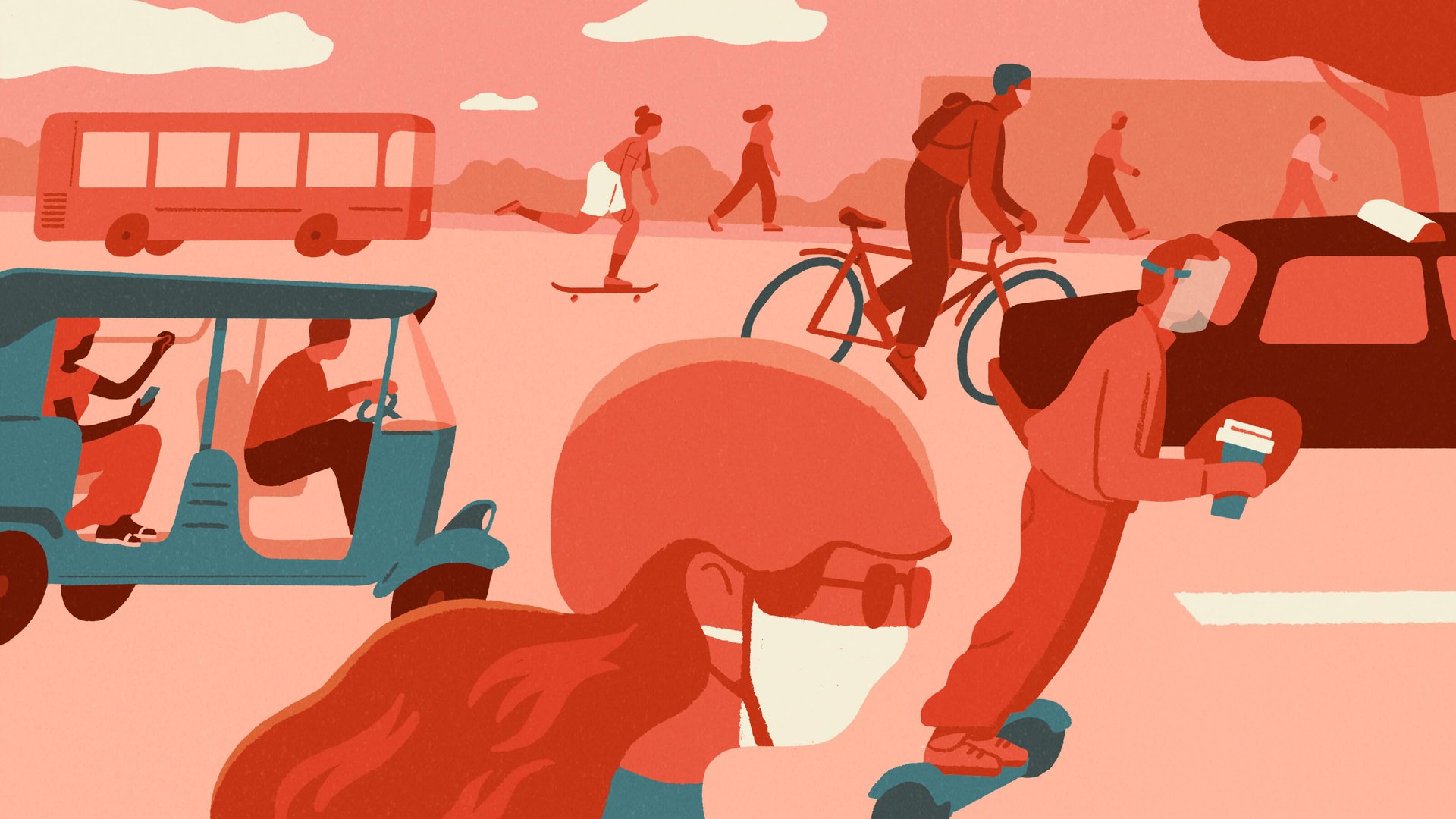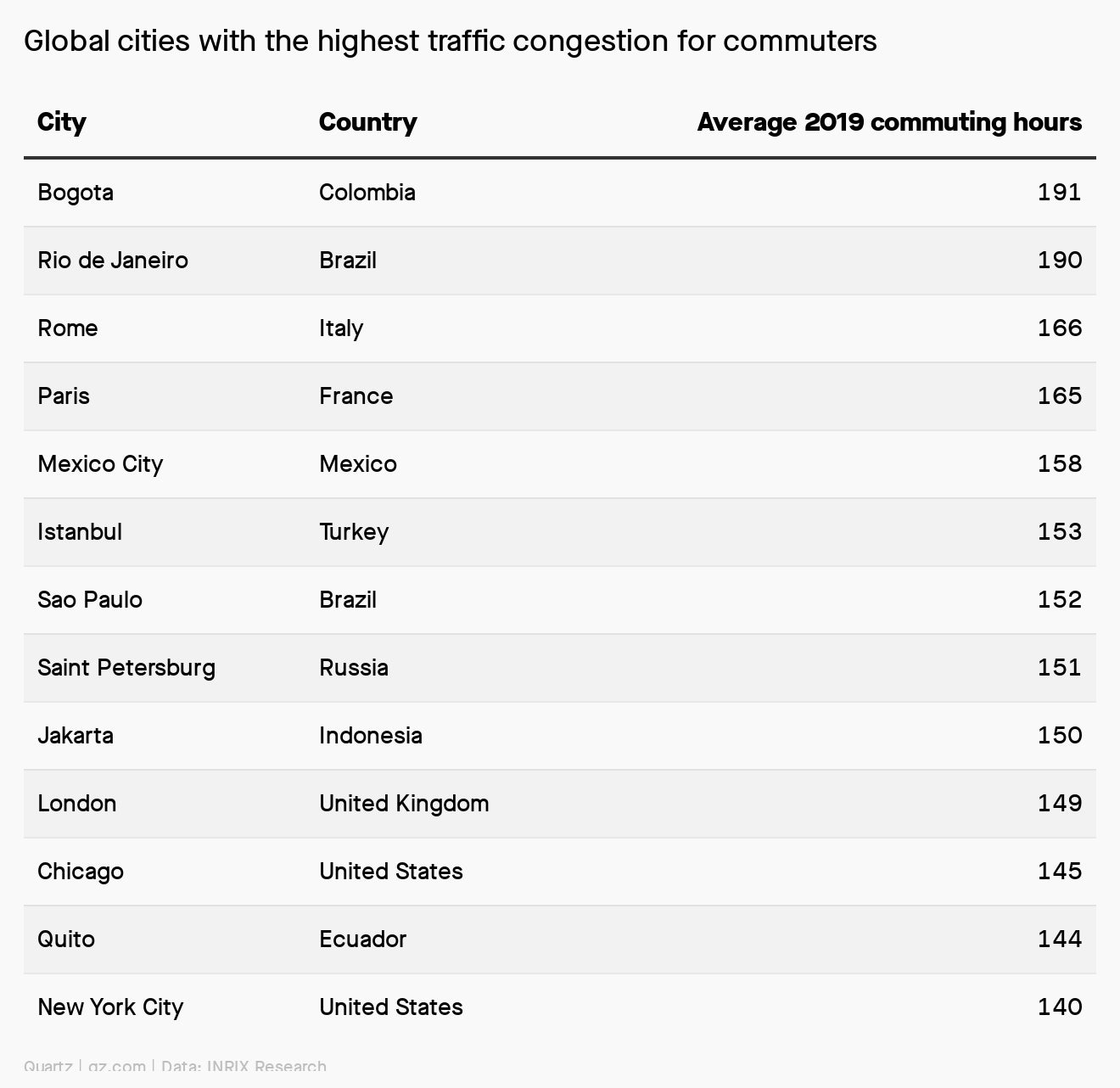Coronavirus: We’re going places
Hello Quartz readers,

Hello Quartz readers,
After a brief flirtation with normalcy, locales from California to Hong Kong are now contending with reclosings following new outbreaks. The backtracking is a gut-punch for restaurants, retailers, and other businesses that had just started to open up, and a sobering reminder that the road to recovery will be long and bumpy.
That makes now a great time to share Need to Know with someone in your life who…needs to know: that there is a sustainable way to keep yourself informed about this pandemic without going insane, and that there are many reasons to hope—and even smile—in the midst of this shared experience.
And if that doesn’t sell them, mention the puns.
Mind the gap
The train lines serving downtown San Francisco are nearly empty, cruising beneath mostly shuttered skyscrapers and wind-swept streets. Workers who normally ascend escalators by the thousands during rush-hour commutes are virtually absent. Through myriad small decisions, San Francisco, one of America’s wealthiest cities, had designed its public transportation to serve white-collar workers. Since the coronavirus pandemic struck, they’re nearly absent.
A few blocks away, the buses and trains serving Chinatown are often full. The 14 MUNI bus leaving Excelsior, home to many of the city’s Hispanic residents, hums with people mostly wearing masks (by city order). Destinations in its outer, less expensive neighborhoods still bustle compared to the desolation downtown as workers head to hospitals and essential businesses from their more modest homes perched on San Francisco’s steep hillsides.
The coronavirus pandemic is rewriting who rides transit, and where they go. Historically, transit agencies have focused on delivering professionals downtown, often at the expense of lower-income residents who need access to jobs. Now that ridership has dropped by as much as 90% in major US metros, all those empty seats are giving cities a chance to ponder their identity: Who do they serve, and why?
“Almost every transit agency is fast-tracking something and making a ton of changes right now,” says Tiffany Chu, founder of Remix, an urban mobility planning startup that works with 325 cities. “We’re seeing it happen on the back-end every day.”
A new model is emerging, one that weaves together transit and micro-mobility options, with personal vehicles on the outside, and underserved communities at the center. This approach optimizes what transit does best: funneling as many people through central routes as efficiently as possible, even if that means sacrificing some direct services. To compensate, cities are multiplying the options people need to access these main lines—without cars. This means measures as unglamorous as rapid buses, but also closing roads to cars, subsidizing car-sharing, and authorizing fleets of electric vehicles.
The hope is that someday soon, city residents will be able to walk out the door, catch a scooter, grab the subway, and pedal their last half mile to work, having booked every leg of the commute on a smartphone app.
US transit agencies still need to sell this vision, and pay for it. (In San Francisco, the transit agency was projecting a $66 million budget deficit in January; now it’s expected to hit $200 million.) But the pandemic has opened the doors for change, and the momentum and appetite for experimentation are higher than they’ve been in a long time. The crisis will be a test of what cities want to become.
Sentencing the commute

All over the world, coronavirus is providing a unique opportunity to reshape the way we move through cities. ☝️ The essay above comes from our field guide to the commuting revolution ✦, exclusive to Quartz members. Here’s the TLDR:
1️⃣ The sudden drop in demand and overall reconfiguring of our lives is giving cities a chance to rethink public transit and reckon with their social inequities. 2️⃣ Some planners are jumping at this opening to influence what comes next. 3️⃣ Change may be slow to come, especially where the transit systems were already high-functioning. 4️⃣ For others, it’s a question of improving what already exists. 5️⃣ If cities do want to encourage better habits, now is the time.
To read the full guide, go ahead and scoot into your first year of Quartz membership, or give us a test drive with a 7-day free trial.
Driving the point home
Here’s a sample of some actions cities can take (and have taken) to discourage car culture during and after the pandemic:
🌟 Reward people when they don’t use a private car.
🚲 Subsidize bicycle sales by giving citizens vouchers.
🚇 Make public transit free forever, because fares don’t cover the costs of running systems anyway.
🚶 Fund sidewalk repairs and widen walkways.
🌉 Propose new car-free bridges.
🚌 Add bike racks to buses.
🤝 Make bike shares part of the public system.
⏰ Expand time-saving bus lanes.
🌳 Create first- and last-mile options for carless families in rural areas.
💸 Resist the urge to make parking easier or free.
Define your terms
Marchetti’s Constant: A well-documented phenomenon that says most people are willing to commute for an hour, total, per day, no matter where they live in the world or how they get around. The Italian physicist Cesare Marchetti first proposed this idea in 1994 and subsequent studies have found that it explains the size of modern cities and ancient ones.
Paris piéton: Paris for pedestrians. Motivated by the climate and health crises resulting from the city’s famously high pollution levels, Paris mayor Anne Hidalgo has spent the last few years banning automobiles in many places, redesigning historical intersections, and shutting major thoroughfares.
Hanko: Official company seals used to stamp corporate documents in Japan, which keep many workers tied to their physical workplaces. In April, Japanese prime minister Shinzo Abe ordered ministries to draft new laws to get around the nation’s archaic dependence on seals.
Tactical urbanism: An urban planning approach that eschews years of planning in favor of adopting fast, lightweight solutions that lay the groundwork for future changes. San Francisco, for example, is erecting new bus stops overnight with cans of paint and plastic. The city also designated 24 miles as “slow streets,” with limited traffic, and added miles of bike lanes.
Traffic analytics company Inrix puts out annual data on which cities in the world have the most congestion. In 2019, the two that topped the list were Bogota, Colombia, and Rio de Janeiro, Brazil, with the average person losing 191 hours and 190 hours to traffic each year, respectively. Inrix’s data comes from millions of GPS-enabled devices in cars—data that is then used to power a number of navigation softwares, including Google Waze.

Changing our waze
Transportation habits are hard to break, but nothing spurs a rethink of your daily routine quite like a pandemic. Already, we’re seeing the impacts close to home: In an internal survey, 68% of New York-based Quartz employees said that even after the pandemic, they’d prefer to work remotely at least some of the time, and only 3% said they’d return to being full-time office creatures.
Here’s how else Quartz is adjusting:
- Jackie Bischof, deputy membership editor (London): “I got my bike serviced and am getting a lesson on cycling in central London from a biking nonprofit in case we get a coworking space or I need to go in for meetings.”
- Katherine Foley, health reporter (Washington, DC): “We got a car. Well, technically, borrowing a car—but we’re buying one as soon as we have to give this one back. We haven’t taken the metro in ages; bikes will do around the city for now. And because we’re also planning to move farther away from the center of the city, having a car is gonna be a necessity.”
- David Yanofsky, Things editor (Los Angeles): “I’ve been wearing slippers less on my walk from my bedroom to office, but that might be weather related? My slippers are fuzzy.”
What about you? Have you made any major transportation-habit changes? Will you?
Essential reading
- The latest 🌏 figures: 13.2 million confirmed cases; 7.3 million classified as “recovered.”
- Thinking local: Short trips and staycations will bring India’s tourism industry back to life.
- A woman’s touch: Do countries with female leaders fare better with Covid-19?
- That’s productive: The four-day workweek is suddenly catching on (✦).
- Seeking immunity: The US has invested over $5 billion in Covid-19 medical R&D.
- Be a doll: TV shows are using mannequins for sex scenes now.
Our best wishes for a healthy day. Get in touch with us at [email protected], and live your best Quartz life by downloading our app and becoming a member. Today’s newsletter was brought to you by Michael Coren, Lila MacLellan, Dan Kopf, and Kira Bindrim.